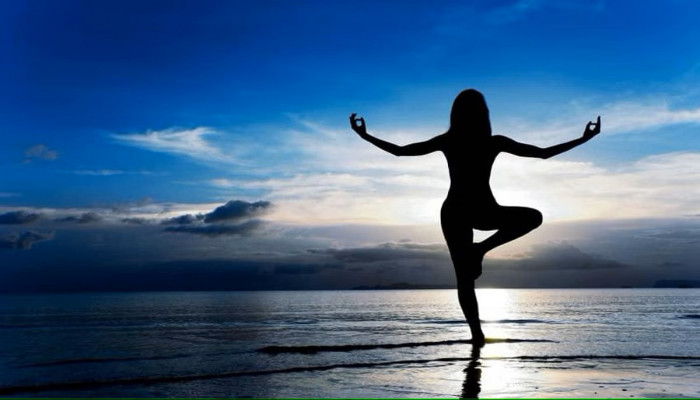Is Modern Yoga Different from Traditional Yoga?
- In LifeStyle & Sports
- 12:14 PM, Mar 10, 2023
- Varun Kulkarni
Is your child or you suffering from anxiety, depression, loneliness or ADHD? Do you know this can be cured or avoided with changes in lifestyle? Lifestyle changes are not only about what you eat but also what you practice and how you practice it. One simple and easy way to align yourself with positivity is through traditional Yoga which evolved in India. Patanjali Yoga Sutras have been written thousands of years ago and talk about the eight limbs of Yoga.
There are several organizations, working towards taking this method and awareness to society. Yoga has gained immense popularity worldwide for its physical, mental, and spiritual benefits. However, with the rise of commercialized western yoga, the practice has been stripped of its spiritual and philosophical roots. On the other hand, there is also the aspect of traditions and practices to keep up with changing times. My argument here is that even though change is good and inevitable, it should bring improvement and upgradation and not downgrade anything. This is exactly what has happened with Yoga.
Commercialization and modernization are good and should help spread the benefits of yoga to more people. However, it seems like this is coming at the cost of its intended values and benefits. Let me explain my point of view about the need for and importance of traditional yoga over the “modern” commercialized version that we see nowadays-
- Philosophy: Emphasis must be on the spiritual and philosophical aspects of yoga, as outlined in classical texts like the Yoga Sutras and Hatha Yoga Pradipika, rather than physical fitness alone. The modern yoga trend seems to prioritize physical fitness aspects like flexibility and approach it more as an exercise.
- Practice: As per the Vibe Indian, yoga involves a comprehensive practice that includes physical postures (asanas), breath control (pranayama), meditation, and ethical guidelines for a living (yamas and niyamas). These elements work together to create a complete yoga practice. On the contrary, commercialized western yoga often only includes physical postures, with less emphasis on the other aspects of yoga like lifestyle and values.
- Spiritual context: Yoga is a spiritual practice that involves the relationship between the individual and the divine. Whereas, commercialized western yoga often removes the spiritual context and focuses on the physical benefits alone.
- Sequence and pace: On one hand, in traditional authentic yoga, the sequence and pace of the practice are often determined by the individual's physical and mental capacity and are designed to bring about a balance between effort and relaxation. On the other hand, commercialized western yoga may have a predetermined sequence and pace, with a focus on a high-intensity workout.
- Personalization: Everybody is different in almost all aspects - diet, posture, flexibility, adaptability etc. Hence the “effect of each asana on everyone is different and takes different times to show results. Traditional methods emphasize the consistency of input rather than the uniformity of output.
- Community: Traditional authentic yoga is often practiced in a community setting, with a teacher-student relationship based on trust and respect. This strengthens the community as a whole as well as instils a level of responsibility towards the overall upliftment of the society rather than just individual improvement. The GURU is not just a “teacher” who is taking “classes” to earn a living. There is a deep connection between the GURU (loosely translates to teacher) and the SHISHYA (loosely translates to student), and the shishya is absolute devotion towards his guru.
In conclusion, I would like to clarify that I am not saying all the commercial yoga studios are bad or misinformed and that no one should go there. My only request is that people understand that whatever is being taught to you in your neighborhood Yoga Studio is not YOGA. YOGA is much more intimate, much more than just exercising and “sweating it out” and “being flexible”. YOGA works on the physical body for sure, but that's just a part of it. It also works on the subtler aspects that we cannot see in the mirror. As long as we understand this difference, any type of exercise we can get in today’s predominantly sedentary lifestyle is good.
Image source: NewsGram







Comments